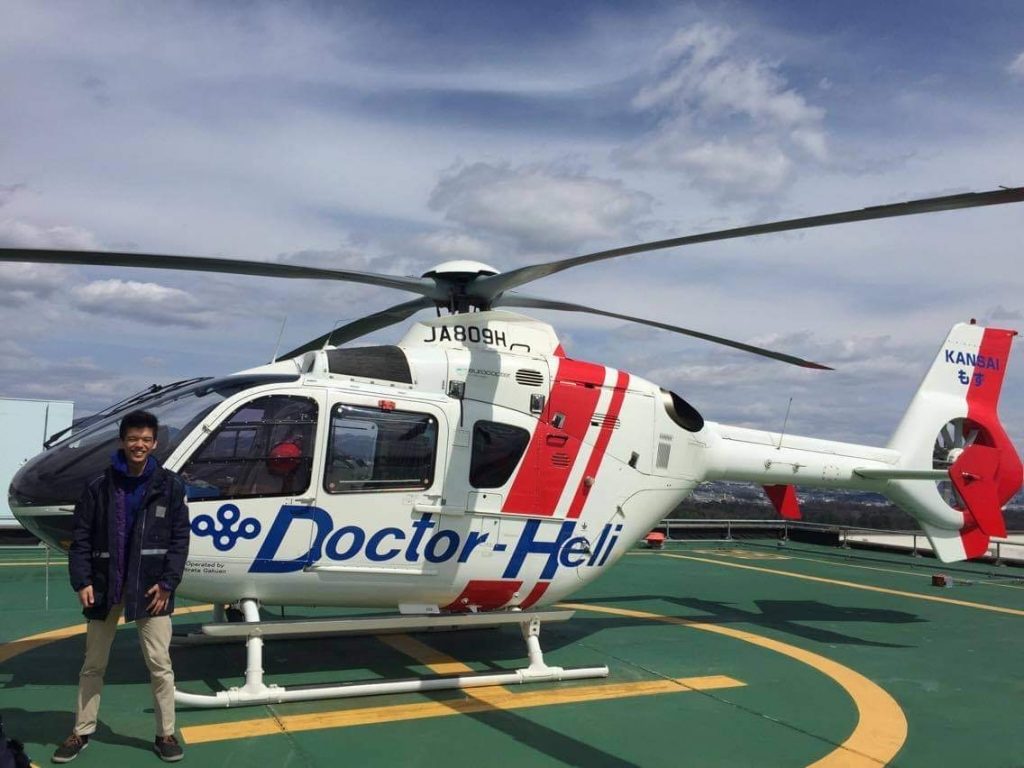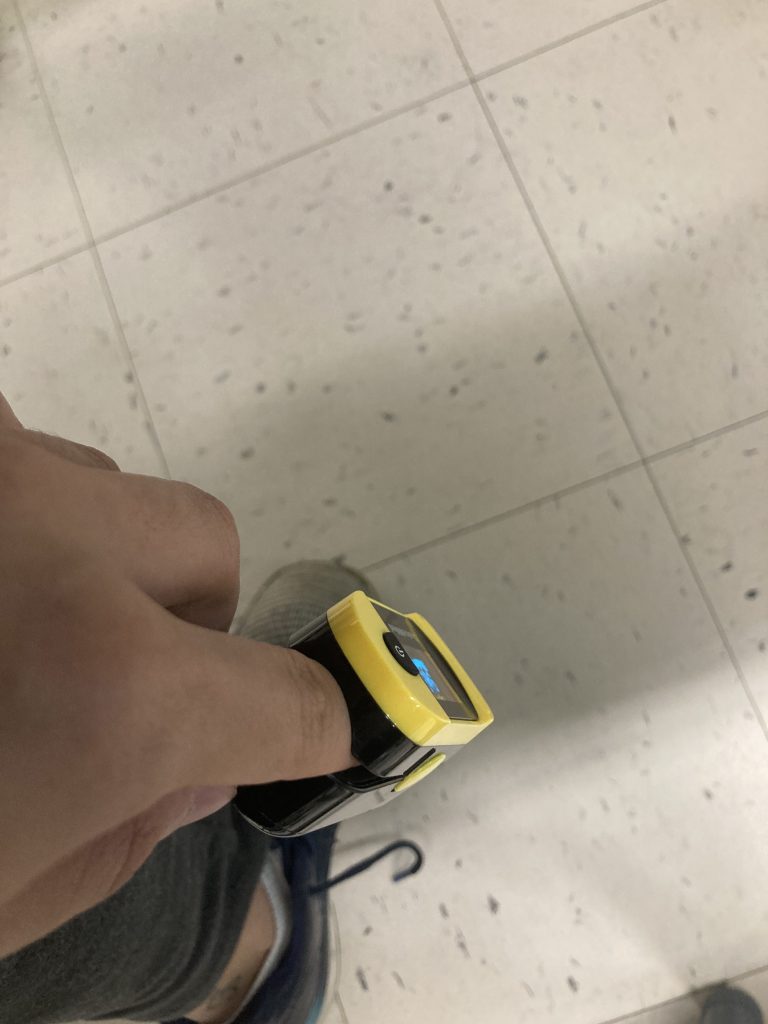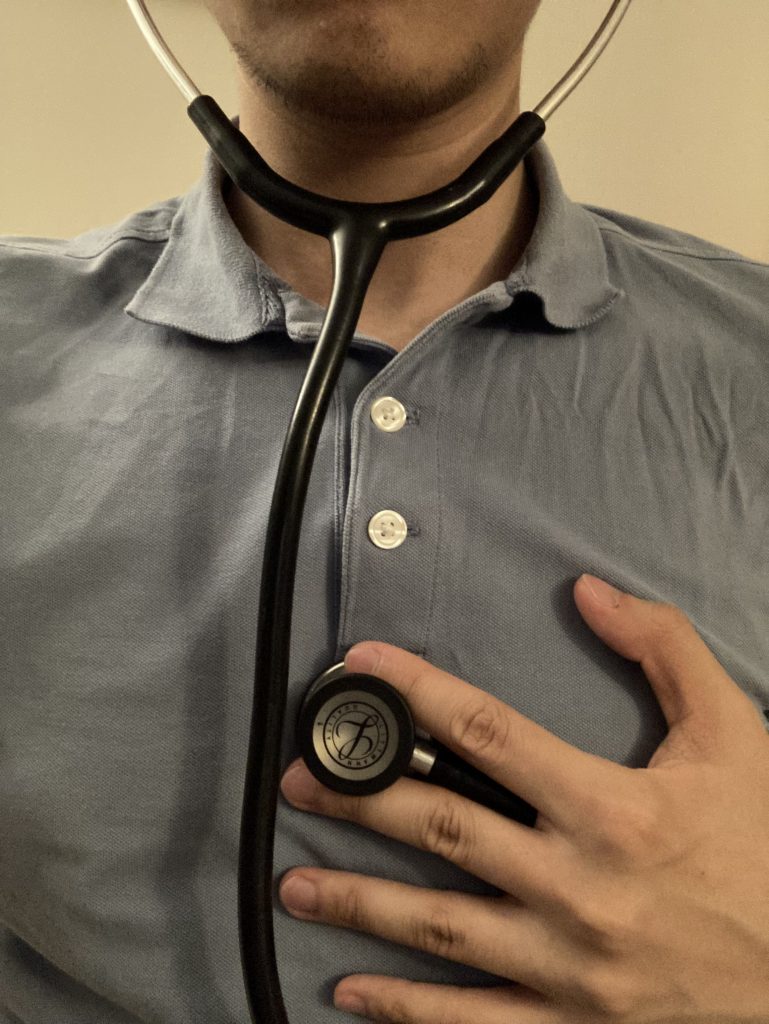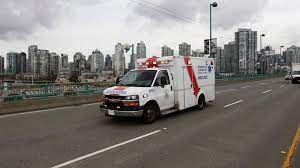
James Chan
James is a student at Capilano University completing his Bachelor’s Degree Psychology. He has multiple certificates associated with pre-hospital care and first aid, and was given bursaries (and scholarships for his active engagement through his services in volunteering and work. He intends to work with the BCAS (BC Ambulance Service) after he graduates with his degree in psychology, and is looking to incorporate psychological care into the field of patient care as a paramedic, self care (as a paramedic), and caring for coworkers.
On a day to day basis, first responders face many psychological and mental tribulations, while they carry the weight of performing a necessary and vital service to communities in our global society. In a study by Fleischmann and colleagues in 2016, it was found that there are an estimated 125-300 police officers whose lives are taken by suicide every year. Accordingly, in2015 another study has found that 30% of people working in emergency services develop behavioral disorders, in comparison to the 20% of people in the general population who develop behavioral disorders (Fleischmann et al, 2016 & Abbot et al, 2015 cited in SAMHSA, 2018). Acute stress disorders, PTSD, and other stress related disorders have always been prevalent amongst first responders, whether these diagnoses were found during traumatic events or in the aftermath. Notable significant events such as 9/11, the COVID-19 pandemic, or the current opioid epidemic in the Lower Mainland region of British Columbia, Canada, are examples of occurrences that potentially may lead to these disorders and conditions amongst first responders.The profession of being a first responder itself is extremely stressful both physically and psychologically, consequently placing these workers at a greater risk of mental health disorders.In regards to this evident issue experienced by first responders, I propose that psychological training should be provided at greater accessibility to these frontline workers, allowing them to care for both themselves, and other workers.
Many first responders face various mental health issues, therefore it is pertinent to assess all potential factors which lead to a high, intense degree of stress experienced both in the workforce and after clocking off shift. One factor of stress to consider is prolonged duration and inconsistent scheduling of shifts. This combination interferes with circadian sleep cycles, as shifts may occur within any time point in a 24 hour period. Another disparity experienced by first responders is lack of compensation for such grueling, high stress labour. Low pay rates amongst paramedics in British Columbia, Canada has been an issue that has been ignored for several decades compared to many other provinces in Canada, and states in the USA. The continuity of unlivable wage given particularly to paramedics, is a major stressor that must be addressed promptly. Furthermore, for first responders, there continues to be a lack of resources and training provided for psychological self care and care for others. Relative to the lack of psychological training, a number of studies have found that there is still stigma that exists against mental health illness and support seeking behaviors. The issue of inconsistent shift times, low pay rates, and lack of resources and training for psychological self care, may be concluded to stem from significantly insufficient government funding.

In my personal, former lived experience as both an employed and volunteer event medic, I partook in the responsibility of patients in a variety of situations, including those which were life threatening. Also having been trained by several paramedics and firefighters, I have gotten the opportunity to meet many of them, and get insight on experiences in the field of emergency services. By working in many different circumstances of varying severity, I developed effective stress management strategies, which carried me through even the most dire situations. As I hope to become a paramedic upon completion of my undergraduate degree in psychology, I intend on continuing to utilize stress management strategies reinforced by my educational background in psychology. I believe that the application of psychological care into the field of emergency services is something that would be extremely beneficial for frontline workers by providing more accessible tools for self care and stress management, allowing them to also help colleagues before, during, and after stressful events.
Many sources have identified that long and inconsistent shift times are a major factor of stress amongst first responders. The nature of shifts scheduled contributes to sleep disturbances, and regardless of one’s age, profession, and life circumstance, first responders included, sleep is important for the brain and body to properly function. In 2010, a study by Courtney and colleagues found a correlation between sleep disturbances and depression or/and anxiety, and with relevance to sleep disorders. Other studies looking into populations suffering with insomnia found that 50-75% of the population correlated with comorbidities of other psychiatric disorders, more so in mood and anxiety disorders (both mentioned in Felman et al, 2020). It raises a concern that the study by Courtney and colleagues also found that up to 72% of first responders have been reported to face sleep disturbances. Amongst firefighters, Stanley and colleagues in2017 raised significant concerns in terms of erratic sleep schedules , and its risks on mental health (as cited in SAMHSA, 2018). The combination of their work that consumes high amounts of energy, due to consistent exposure to life or death decision making processes, with an inconsistent sleep schedule, poses an extremely high risk to the development of mental health disorders.

In the field, some situations may also place the first responders life at risk as well, activating bodily mechanisms that consume short, intense bursts of energy, which can be physically and psychologically draining or/and traumatizing. An issue that arises in scheduling as well is that it is an extremely demanding field that requires high levels of dedication, because it is extremely hard to get time off (SAMHSA, 2018). In addition, they also mentioned Bentley and colleagues’ study in 2013 which found that 63% of EMS (Emergency Medical Services)personnel never had enough time to recover from traumatic events (SAMHSA, 2018). These damages have also been seen to have long lasting detrimental effects on first responders. As an example, looking into first responders who helped during the 9/11 world trade center attacks, data was consistent that the trauma affected several lifetime deficits such as health, functional impairment, and disabilities in relation to the event (Bello et al, 2021). These traumas not only affect first responders in their work life, but also affects them in their home lives as well (Casas & Benuto, 2021). Overall, inconsistent shifts cause disturbances to sleep cycles poses a risk to the mental health of first responders. Incorporating into their education on current research in terms of how to adapt to such work schedules may also show to be an effective solution to the issue of scheduling.
The combination of insufficient staffing and lack of government funding is a possible explanation for the limited flexibility for scheduling time off. This is an apparent contributing factor to the lack of resources for psychological care typically faced amongst first responders. It was an issue addressed several times across several different types of first responders, in accordance with data that was collected via surveys from first responders working in the lower mainland in British Columbia, Canada (consisting of paramedics and nurses). One possible solution proposed by a paramedic in British Columbia to account for the long inconsistent shift times, was to increase funding and hire more staff to reduce the amount of burnout that occurs on the field.
The low funding also unfortunately also equates to low pay wages amongst paramedics, especially those working in British Columbia. Shockingly, Global News interviewed a part time paramedic in BC who raised concerns about having the wage of $2/hour while on call (when there are no calls during the 6-12hr shift), that it raises large amounts of financial uncertainty amongst many paramedics, especially amongst the COVID-19 pandemic (Knox, 2020). With wages below the standard minimum, this undoubtedly creates another stressor amongst them. Another influence that low pay wages have is that it can influence how paramedics in BC perceive how their work is seen in society. By being given a wage that is below minimum wage, this can result in paramedics vulnerable to burnout due to the additional adverse effects associated with it, such as financial burden, lack of satisfaction, and negative attitudes towards their work. Burnout is identified in the ICD-11 (International Center of Diseases) as “increased mental distance from one’s job”, “reduced professional efficacy”, and “feelings of energy depletion” from chronic workplace stress that was not properly managed (WHO, 2019). The increase in wages, resources, and training may be perceived to be a plausible solution, which was recommended by many paramedics and nurses through their interviews.

Though interviews and research have shown that supportive environments help with coping with traumatic events or stressful events, stigma still exists in the first responders community when it comes to getting help or social support. Currently, some qualitative studies showed internal factors that prevent ‘help seeking behaviors’ from occurring, and findings included fears of being judged (eg.being seen as incompetent), breach of confidentiality, or damaging one’s reputation and career amongst them (Casas & Benuto, 2021). Other factors that Casas and Benuto’s study found were external ‘barriers’ preventing them from gaining access to help were factors such as not having time for scheduling appointments, senior workers discouraging gaining access to help, and not having proper training or knowledge to gain access to help. Relative to stigma, power imbalances are a major issue amongst first responders, and much like other workplaces, there are unsupportive senior workers that cause more stress, but also are unwilling to provide social support when needed.
In Japanese workplaces within the population of first responders, work dynamics are quite different from Western culture in that much more activities are typically done with colleagues, such as dinners, gatherings, more activities, which seems to neutralize power relations, and increase social bonding/relationship as well as mutual respect. Through interviews with emergency doctors, paramedics, and nurses, many have expressed that one vital source of social support was either from their families or colleagues. A problem that was brought up by another study that occurred during the COVID-19 pandemic, was that many first responders working in the medical field found that they were stigmatized outside of their workplace for having to be in contact with several patients infected by the respiratory disease (Zolnikov & Furio, 2020). Understandably, this causes high levels of stress being isolated from friends, families, and loved ones, let alone being stigmatized by them in exchange for being in contact with infected patients. Social support is a vital source to the mental health of first responders, and that needs to be made clear to them through education and training. Through a wider spread of awareness, the extent of stigmatization that occurs amongst the population is bound to decrease drastically.
There also are limitations to consider when looking into the issues of scheduling, sleep, wages, and stigma amongst first responders. Though the shift times are problematic, there are very few research studies that correlate the issue to mental health outcomes (Feldman et al,2020). Furthermore, no research has currently been done on the relation between disturbed sleep and the future development of PTSD, anxiety, or depression amongst the population of first responders. Another limitation is that resilience, as well as perceived stress, seems to play amajor influence on how one is affected by longer, inconsistent shifts, though perceived social support seems to play the biggest role in coping to trauma (Prati & Pietrantoni, 2010). Through a survey, an emergency medical doctor who was interviewed in Japan seemed to not be too bothered by spending large amounts of time away from his family or his private life for work, and his responses compared to other first responders working in western cultures were surprisingly, and distinctively more optimistic rather than pessimistic. Emergency medical doctors have a much higher level of responsibility in patient care compared to fire fighters, paramedics, or nurses, yet happen to show high levels of resiliency. A possible explanation can be that emergency medical doctors have much higher financial income than other first responders, reducing financial concerns or stress. Another explanation could be that because they are in another country, and that the social attitudes or mindsets to working are completely different compared to western countries. It must not be forgotten that stress levels amongst first responders vary, as stress levels typically rise after major disasters, events, or crises where large amounts of death and suffering has occurred. Garbern and colleagues study published in 2016that looked into medical teams that helped people after the 2011 earthquake and tsunami in eastern Japan, they found a significant spike in clinical depression diagnoses amongst the medical team, in which 21.4% of the personnel were diagnosed (as mentioned in SAMHSA, 2018). There also are individual differences, which influence and predict how one is going to approach and handle a stressor, such as personality, resilience, social influence, personal beliefs, and motivations. The limitations per say, speaks on the lack of in depth research that goes into the mental health of the population of first responders. They also make it clear that not all first responders are heavily affected by trauma, but it still is important to consider that the rates of trauma are extraordinarily high amongst them compared to the general population.
In consideration of the issues mentioned, I believe that there are several changes that can be made to increase the quality of the service provided, the lives of first responders, and the welfare of the general population. As mentioned before, overwhelming levels of stress can influence one’s performance at work (as well as home life), thus evidently, the maximum level of quality in care cannot be provided by a large number of first responders. Taking this into account, with more awareness and attention, new solutions can be made to make things better. Slower response times are typical as the understaffing makes it impossible to attend many call sin time, leaving workers overworked and overwhelmed. To combat the issue of slower response times and high stress, I believe that governmental, authoritative figures need to invest more into first responders for more staffing for better response times, and it also would allow for more training to create more resilient first responders.

Furthermore, I also strongly believe that more research needs to empirically evaluate the issues in mental health amongst first responders, in order to bring light to possible solutions to them as well. I would predict that the increase of funding would also provide more training to first responders, so that more resiliency and support could be built in the population, and that more education can minimize the amount of psychological suffering that occurs through psychological care to self, and to better provide care to others. Another issue that would be tackled is insufficient staffing, through an increase in employing first responders. The latter will lower the risk of burnout or compassion fatigue amongst first responders, allowing for proper breaks after traumatic events, and would prevent overworking as well (Cocker & Joss, 2016).
Comparing cultural differences through interviews provided unexpected insight, as perspective in stress seems to have been a significant influence in how their work is perceived, and how stress is managed. Different perspectives exist in the workplace of first responders, but I strongly believe it should be discouraged amongst first responders to stigmatize others for gaining access to mental health support or help after traumatic events. Increased funding also would predictably lower financial stresses and burden amongst them as well. Lastly, I am hopeful that more training and education in psychological care can help change and address workplace stigmas, to encourage and educate first responders about how to take care of themselves and others psychologically, and to encourage a new perspective in how to approach stress and trauma in their workplace.
First responders will continue to face challenges on a day to day basis though they are a vital source of our society. With response times of first responders becoming slower and slower, it will not improve compared to what it is now without intervening to make things better. They need the training, support, and knowledge in order to help themselves, and each other to build resilience especially after significant, or major stressful or traumatic events. By providing resources, knowledge, and tools to manage stress, more resiliency will be built amongst first responders for them to better serve your community. The other issue of the lack of funding and resources is another issue that needs to be addressed by government or authority figures. By solving the issue of funding, it would also predictably solve underlying issues such as high rates of burnout from overworking, lack of time to recover, and breaks, subcultural stigmas, and the overall health of them. In addition, previously mentioned as a limitation, more research needs to be done to identify significant issues in this population to address. As a community, I believe that we ought to make things better for them and to take initiative to those who serve our community.Doing so can potentially create new, and more positive approaches in managing stress, overall increasing the wellbeing of society one population at a time. Making a change for them can make a difference to a possible time when you need them the most.

http://www.bcehs.ca/our-services/programs-services/ground-ambulances
To conclude, I would like to make an acknowledgement to the first responders who participated and took the time to fill out surveys that significantly helped in contributing to this paper. I would like to personally thank Dr Taro Irisawa from the Osaka university hospital for filling out a survey that reflected his experience as an emergency medical doctor in Japan. Additionally, I would like to thank Jacky Wong, a psychiatric nurse in the Lower Mainland region of British Columbia, Canada for his participation in reflecting on his experience through completion of a survey. The response of two paramedics working in the lower mainland ofBritish Columbia, Canada who’s information will be anonymized have also contributed significantly to this paper, as otherwise, this content would have lacked large amounts of in depth detail without their responses. All participants were selected via convenience sampling, and voluntarily filled out the survey, dedicating their energy and time into them, in which I full heartedly appreciate. I will also highlight that no firefighters or police officers were interviewed, though they are considered first responders (due to the lack of availability). Information about them was discussed from the data collected from qualitative psychological studies. Lastly, I am highly thankful for the first responders that serve our communities by keeping us safe, and are always there when we need them most.
Works Cited
Bello, G. A., Ornstein, K. A., Hung, W. W., Lucchini, R. G., Ko, F. C., Colicino, E., Taioli, E.,Crane, M. A., & Todd, A. C. (2021). World Trade Center Clinical Frailty Index. PsycTESTS Dataset.https://doi.org/10.1037/t81487-000
Casas, J. B., & Benuto, L. T. (2021). Breaking the silence: A qualitative analysis of trauma narratives submitted online by first responders. Psychological Trauma: Theory, Research, Practice, and Policy. https://doi.org/10.1037/tra0001072
Cocker, F., & Joss, N. (2016). Compassion fatigue among healthcare, emergency and community service workers: A systematic review. International Journal of Environmental Research and Public Health, 13(6), 618. https://doi.org/10.3390/ijerph13060618
(2018) Disaster Technical Assistance Center Supplemental Research Bulletin First Responders: Behavioral Health Concerns, Emergency Response, and Trauma. SAMHSA.
Feldman, T. R., Carlson, C. L., Rice, L. K., Kruse, M. I., Beevers, C. G., Telch, M. J., & Josephs, R. A. (2020). Factors predicting the development of psychopathology among first responders: A prospective, longitudinal study. PsychologicalTrauma: Theory, Research, Practice, and Policy. https://doi.org/10.1037/tra0000957
Knox, J. (2020) Okanagan paramedic voices concern about proposed wage drop – Okanagan | Globalnews.ca. (n.d.). Global News. Retrieved April6, 2022, from https://globalnews.ca/news/6777614/okanagan-paramedic-concern-wage-drop/
Prati, G., & Pietrantoni, L. (2010). The relation of perceived and received social support to mental health among first responders: a meta-analytic review. Journal of Community Psychology, 38(3), 403–417. https://doi.org/10.1002/jcop.20371
World Health Organization. (2019). Burn-out an “occupational phenomenon”: International classification of diseases. Www.who.int.https://www.who.int/news/item/28-05-2019-burn-out-an-occupational-phenomenon-international-classification-of-diseases
Zolnikov, T. R., & Furio, F. (2020). Stigma on first responders during COVID-19.Stigma andHealth. https://doi.org/10.1037/sah0000270
